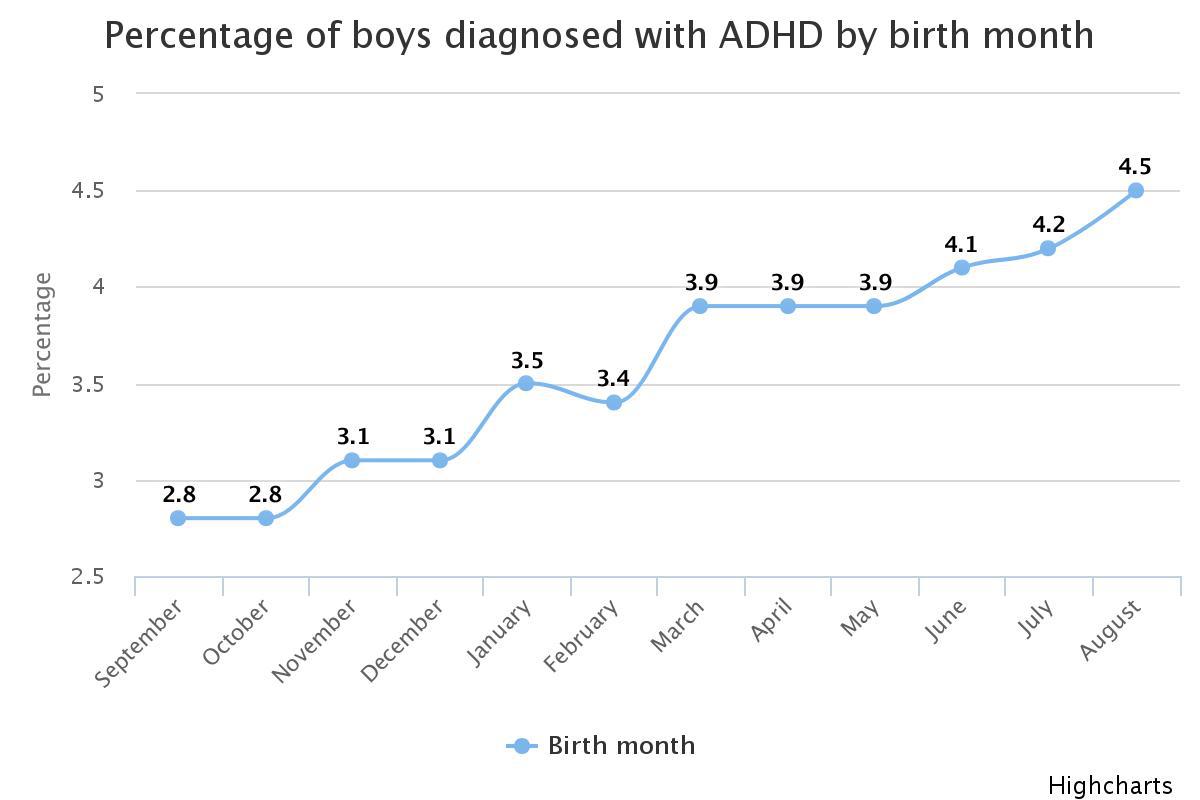Simply immature children would be wrongly diagnosed with ADHD, according to a study that warns about drug misuse.

ADHD, a fashionable, overdiagnosed and wrongly treated disease? This is what the results of a study published in the Journal of Pediatrics, conducted on more than 400,000 Taiwanese children aged 4 to 17, on this famous “attention deficit disorder with or without hyperactivity (ADHD)”.
The youngest of the class
In reality, according to the authors, many diagnoses relate to children who simply testify to a form of immaturity. Moreover, the “youngest of the class” seem particularly affected by this overdiagnosis.
The researchers thus note variations in the number of declared cases and drug prescriptions according to the month of birth of the child. Only 2.8% of boys born in September are said to have ADHD. This proportion increases throughout the year, reaching 4.5% of children born in August.

Source: The Telegraph
Age as a risk factor
According to the authors, some of these erroneous diagnoses are linked to an inappropriate comparison scale at school. Teachers would thus tend to judge the development of a child from that of another, more mature. In this system, the youngest would be defined as deficient, inferior – hence the search for pathology.
“THAD is the most widely diagnosed neurodevelopmental disorder,” write the authors. The age difference could play a crucial role in the risk of being wrongly diagnosed and treated in children and adolescents ”. The researchers therefore suggest paying attention to the age of patients at the time of diagnosis, in order to clearly distinguish a simple form of immaturity from a real disorder.
Explosion of treatments
As prescriptions for Ritalin, a treatment for ADHD, explode around the world – the United States and the United Kingdom in the lead – the question of misuse arises in a crucial way. The drug has many side effects – loss of bone density, behavioral problems, etc.
The ANSM, the French drug agency, recently recalled the precautions for use linked to this drug, highlighting the cardiovascular, neuropsychiatric and cerebrovascular risks. “The risks of misuse and dependence also require special monitoring,” she explains.
In France, this treatment concerns 3 to 4% of boys and 1% of girls of school age, or 135,000 to 170,000 children, according to data revealed in 2013 by the company Celtipharm. At the time of the study, the number of boxes sold had increased by nearly 70% in five years. In the United States, 6.4 million children are declared ADHD.
.















